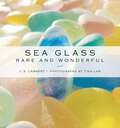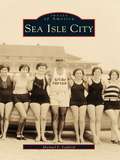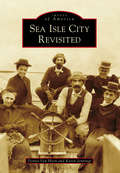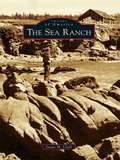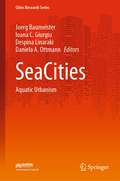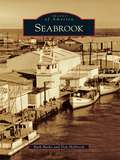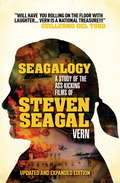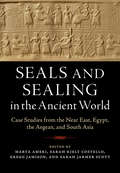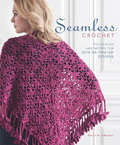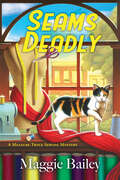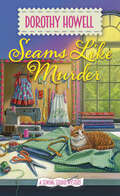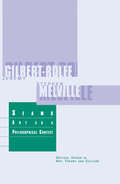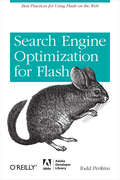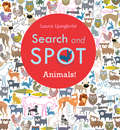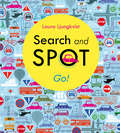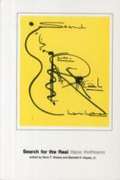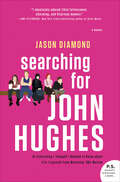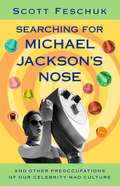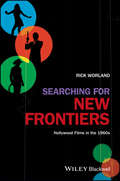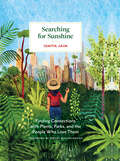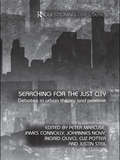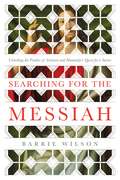- Table View
- List View
Sea Glass: Rare and Wonderful
by C. S. LambertAlmost every shoreline offers up worlds of adventure, archaeology, science, and the arts in the form of sea glass and ceramic shards. These discarded remains pull beachcombers into a world of startling revelation; a world of history founded on documented research and broadened by the imagination.Recognized expert on sea glass, C.S. Lambert guides readers through her personal collection, revealing the fascinating true stories of each piece&’s origin. Lambert shares the story behind the design ofvintage bottles, the hidden purpose of mysterious pieces of sea glass, and the history of china patterns and ceramic dolls. She also shares some of the rarest specimens of sea glass, for some of which there are only one or two pieces known to be in existence. It's a treat for sea glass aficionados everywhere.
Sea Isle City (Images of America)
by Michael F. StaffordThe founder of Sea Isle City, Charles K. Landis, was a man of action. He had a dream of what the ideal seashore resort should be. In the 1870s, his dream began to take shape. It has been said, "Each age is a dream that is dying or a dream that is coming to life." This is the fascinating story of how Sea Isle City, located along the New Jersey coast in Cape May County, evolved. Sea Isle City is a pictorial tour of the founding and early history of this resort by the sea. Almost overnight the island town became accessible by railroad and by turnpike. Hotels and cottages appeared throughout the island. The Braca, Busch, Cronecker, Dever, Kehner, Pfieffer, and Rey families played a vital role in the growth of the town. Another family, the Hafferts, formed the Garden State Publishing Company, which contributed significantly to employment and economic stability. Commercial fishing became an important industry in the development of the town with the coming of the "Hatmen" at the beginning of the twentieth century. The influential people who shaped the community and countless other families, schoolchildren, and local legends are finally brought together in Sea Isle City.
Sea Isle City Revisited (Images of America)
by Karen Jennings Donna Van HornThe island eventually known as Sea Isle was first purchased by Joseph Ludlam in 1692 for use as a grazing pasture. The island changed almost overnight when Charles K. Landis purchased it in 1880, intent on creating a seaside resort. After adding a railroad and hotels, tourists soon followed. The boardwalk hosted beach parties; clam bakes; and bicycle, sack, and even motorcycle races. Wedged between the Atlantic Ocean and the back bays, commercial fishing companies shared the waters with casual anglers. Recreational sailing, yacht racing, and sport fishing have long been popular with Sea Isle's year-round residents and visitors alike. Sea Isle City Revisited showcases the rich maritime and recreational history of this New Jersey coastal town.
Sea Ranch, The
by Susan M. ClarkThe Sea Ranch, translated from the Spanish "Del Mar Ranch," occupies the northwest corner of Sonoma County and is renowned for its architecture and environmental sensitivity. The development of a second-home community in 1965 was just one more chapter in a long history that began in 1846. The Sea Ranch is part of the German Rancho, the most northern coastal Mexican land grant, which was confirmed by the United States following the Treaty of Guadalupe Hidalgo in 1848. It was home to German cattlemen, loggers, and an early-20th-century Russian Baptist colony. Over the years, shepherds, World War II soldiers, and bootleggers have called it home. Early maps and photographs tell the history of the area, and contemporary photographs reveal remnants of historic buildings and sites on the current Sea Ranch landscape.
SeaCities: Aquatic Urbanism (Cities Research Series)
by Joerg Baumeister Daniela A. Ottmann Ioana C. Giurgiu Despina LinarakiThis book highlights the research outcome of Cities Research Institute's SeaCities group at Griffith University and a panel with the same title which took place at the World Expo in Dubai 2021/22 supported by the UN. It reflects on topics which are relevant for a future aquatic urbanism like the evolution of a taxonomy for aquatic urbanism, island and ecological wetland development, the planning aspects of seascapes, as well as drivers for floating communities and aquacultural urbanism. The book broadens the perspective of the previous book "SeaCities: Urban Tactics for Sea-Level Rise" published in 2021 from a terrestrial towards an amphibious and aquatic understanding of future city development.
Seabrook
by Ruth Burke Don HolbrookSeabrook enjoys a prime location on Galveston Bay at the outflow of Clear Creek. Formerly a Spanish land grant known as Morris Cove, the town began to assume its modern shape in 1895 when Seabrook Sydnor purchased part of the Morris league and platted the town site. Brothers Albert and Ernest Fay founded the Seabrook Shipyard in 1938, which went on to build submarine chasers and rescue boats during World War II. The year 1961 was a landmark moment for Seabrook: Hurricane Carla hit on September 11, and a week later, the National Aeronautics and Space Administration (NASA) announced that its Manned Spaceflight Center would be built in nearby Clear Lake, launching a period of accelerated growth. Fearing annexation by Houston or La Porte, Seabrook leaders took steps toward incorporation that same year. Today Seabrook is listed on the Great Texas Coastal Birding Trail and is part of the third-largest boating community in the United States.
Seagalogy: The Ass-Kicking Films of Steven Seagal (New Updated Edition)
by VernVern, the self-styled 'outlaw film critic' is described by Hellboy director Guillermo Del Toro as "equal parts Hell's Angels and Pauline Kael... a national treasure!" Now Vern unleashes his magnum opus: an in-depth study of the world's only aikido instructor turned movie star/director/writer/blues guitarist/energy drink inventor, the ass-kicking auteur Steven Seagal. "A book that'll shake the very foundations of film criticism, break their wrists and then throw them through a window."
Seals and Sealing in the Ancient World: Case Studies From The Near East, Egypt, The Aegean, And South Asia
by Marta Ameri Sarah Kielt Costello Gregg Jamison Sarah Jarmer ScottStudies of seals and sealing practices have traditionally investigated aspects of social, political, economic, and ideological systems in ancient societies throughout the Old World. Previously, scholarship has focused on description and documentation, chronology and dynastic histories, administrative function, iconography, and style. More recent studies have emphasized context, production and use, and increasingly, identity, gender, and the social lives of seals, their users, and the artisans who produced them.<P><P> Using several methodological and theoretical perspectives, this volume presents up-to-date research on seals that is comparative in scope and focus. The cross-cultural and interdisciplinary approach advances our understanding of the significance of an important class of material culture of the ancient world. The volume will serve as an essential resource for scholars, students, and others interested in glyptic studies, seal production and use, and sealing practices in the Ancient Near East, Egypt, Ancient South Asia and the Aegean during the 4th-2nd Millennia BCE.<P> Highlights cross-cultural and cross-chronological perspectives on glyptic studies, seals, and sealing practices in the ancient world, making it appealing to people from different disciplines who specialize in different regions and time periods of the ancient Old World.<P> Utilizes a comparative framework lacking in previous studies of glyptic, seals, and sealing in the ancient world, providing an invaluable reference for comparative analyses of glyptic studies, seals, and sealing practices in the ancient world,<P> Highlights existing and new methodologies and approaches to glyptic studies, seals, and sealing practices in the ancient world, appealing to those interested in multiple methodological approaches to the study of the past,
Seals, Craft and Community in Bronze Age Crete
by Emily S. K. AndersonGenerations of scholars have grappled with the origins of 'palace' society on Minoan Crete, seeking to explain when and how life on the island altered monumentally. Emily Anderson turns light on the moment just before the palaces, recognizing it as a remarkably vibrant phase of socio-cultural innovation. Exploring the role of craftspersons, travelers and powerful objects, she argues that social change resulted from creative work that forged connections at new scales and in novel ways. This study focuses on an extraordinary corpus of sealstones which have been excavated across Crete. Fashioned of imported ivory and engraved with images of dashing lions, these distinctive objects linked the identities of their distant owners. Anderson argues that it was the repeated but pioneering actions of such diverse figures, people and objects alike, that dramatically changed the shape of social life in the Aegean at the turn of the second millennium BCE.
Seamless Crochet
by Kristin OmdahlJoin the seamless revolution!Kristin Omdahl debuts her revolutionary, one-of-kind seamless motif joining crochet technique in Seamless Crochet. Traditional motif seaming techniques require crocheters to painstakingly sew together hundreds of seams and weave in countless ends. Not with Seamless Crochet!Innovative designer Kristin Omdahl has pioneered a new technique for crocheters of all skill levels to create motif-based patterns in one piece, eliminating seams and leaving only two ends to weave in. Kristin's brand-new modular construction allows one motif to flow into the next, creating secure joins and beautiful geometric patterning on the exterior round.Inside you'll find a showcase of 18 garment, home decor, and accessory projects from Kristin that will change the way you crochet forever. From pillows to shawls to blankets, these projects will show you just how versatile and time-saving this "tail-free" construction method is.Seamless Crochet will transform the way you approach every crocheted motif-based design, giving you professional crochet results in a fraction of the time.
Seams Deadly (A Measure Twice Sewing Mystery #1)
by Maggie BaileyWhen sewist Lydia Barnes finds a dead body soon after moving to a new town, she will need more than shear luck to find the killer, in this novel perfect for fans of Molly MacRae and Anna Gerard.Lydia Barnes is excited for a fresh start when she moves to the quaint mountain town of Peridot, Georgia. Her friend, Fran, offers her a job at the Measure Twice fabric store and even sets her up on a date with the handsome Brandon Ivey, who also happens to be Lydia&’s new next-door neighbor. Finally, things are looking up. But after a disaster first date that ends with a fist bump instead of a kiss, Lydia doesn&’t think her night can get any worse. She&’s soon proven wrong when she later stumbles upon Brandon&’s dead body.Considered the prime suspect by the police, Lydia calls on her friends to help her hunt for the truth and prove her innocence. But when another body is soon found inside the Measure Twice store, Lydia knows that the killer must be close by, and that this town has more than its fair share of secrets. Who would want to frame the newest addition to Peridot for these terrible murders—and why?Lydia may discover that while sewing might have a pattern, killing rarely does. Will she be able to stitch together the clues and clear her own name before the killer strikes again?
Seams Like Murder (A Sewing Studio Mystery #1)
by Dorothy HowellAbbey Chandler needs a new start and a place to escape, so Hideaway Grove, where she spent her childhood summers, seems like a perfect choice. Once there, she takes up a rewarding new hobby—but also gets tangled up in a hit-and-run homicide . . . Abbey has barely arrived in the quaint, quiet town of Hideaway Grove before things turn from blissful to bloody—as the new librarian is mowed down by a car. The only witness on the scene isn&’t much help, aside from handing Abbey the bag of books dropped by the victim. Even worse, the sheriff&’s office seizes Abbey&’s car because of a suspicious dent in the right front fender. While she waits for the problem to be sorted out, Abbey is drawn into a charity sewing project—even though she can&’t tell a bobbin from a seam ripper. Before she knows it, she&’s graduating from pillowcase dresses to aprons, setting up a studio in a back room of her aunt&’s bakery, and making plans to participate in the upcoming craft fair. But through it all, she keeps looking for patterns and possible conflicts in the late librarian&’s personal, professional, and romantic life. Then a shocking discovery sends her in a new direction, and as the truth begins to unspool, she&’s got a notion about who&’s guilty . . . &“A charmer of a mystery, a thoroughly engaging tale of murder, romance, and yummy desserts. (Not to mention a nifty sewing project!) I was hooked from page one.&” —Laura Levine, author of Death by Smoothie
Seams: Art as a Philosophical Context (Critical Voices in Art, Theory and Culture #Vol. 2)
by Stephen Melville Jeremy Gilbert-RolfeFirst published in 1997. Routledge is an imprint of Taylor & Francis, an informa company.
Search Engine Optimization for Flash: Best practices for using Flash on the web
by Todd PerkinsSome people believe that because search engines can't index all of the content in SWF files, Flash-based websites and Rich Internet Applications don't show up in web searches. This breakthrough book dispels that myth by demonstrating precisely what you can do to make your site fully searchable no matter how much Flash it contains. You'll learn best practices for using HTML, CSS, and JavaScript to build sites with Flash that will stand tall in search rankings.Search Engine Optimization for Flash shows you how search engines work, what constitutes a search-engine-optimized (SEO) site, and what to watch out for in the way of SEO pitfalls. With this concise book, you will: Know what content is searchable, and why metadata, keywords, and links are so important Learn how to place HTML content in your Flash applications Create an SEO website by connecting Flash to JavaScript and CSS Work effectively with SWFObject by understanding its capabilities and limitations Discover the advantages of using the Adobe Flex framework for SEO The first and most authoritative book on how to optimize Flash content for search engines, Search Engine Optimization for Flash is an invaluable resource if you develop with Flash and want to be sure your audience can easily find your site.
Search and Spot: Animals! (A Search and Spot Book)
by Laura LjungkvistA vibrant and playful seek-and-find picture book by the acclaimed Swedish artist and designer Laura Ljungkvist, in which the reader uncovers animals hidden in a dazzling array of patterns and colors. The artwork, inspired by a European aesthetic, gives this work a simple, but sophisticated look that appeals to both children and adults. Animals are cleverly concealed as each page provides a new challenge for the reader to discover. An artful and unique book for children who love Where's Waldo and Walter Wick.
Search and Spot: Go! (A Search and Spot Book)
by Laura LjungkvistA vibrant and playful seek-and-find picture book by the acclaimed Swedish artist and designer Laura Ljungkvist, in which the reader uncovers cars, trucks, and all kinds of things that go hidden in a dazzling array of patterns and colors. The artwork, inspired by a European aesthetic, gives this work a simple but sophisticated look that appeals to both children and adults. Things to find are cleverly concealed as each page provides a new challenge for the reader to discover. An artful and unique book for children who love Where’?s Waldo and Walter Wick.
Search for the Real and Other Essays
by Hans Hofmann"The creative process lies not in imitating, but in paralleling nature ;translating the impulse received from nature into the medium of expression, thus vitalizing this medium. The picture should be alive, the statue should be alive and every work of art should be alive. "Thus Hans Hofmann wrote nearly half a century ago. He left the Old World ;Germany ;for the New, at the age of 50. In 1948 when the retrospective exhibition was held at the Addison Gallery of American Art, Hofmann was 68; he had been in the United States for 18 years, a citizen for seven years. Yet he was scarcely recognized in Europe or America as an artist of significance and had never had a full-scale retrospective exhibition of his work. Beginning with a group exhibition in Germany in 1909, he had been given 12 one-man shows and had been included in four group exhibitions before the exhibit at Andover. Subsequently, he was to have 33 one-man shows and to be in over 60 group exhibitions, including the 1960 Venice Biennale, in which he was one of the four artists chosen to represent America. The catalogue of the 1948 retrospective at the Addison Gallery incorporated Hofmann's writings, all originally written in German, some pieces translated fluently, others awkwardly paraphrasing the original. He had written them over a period of 40 years for periodicals journals, or his own teaching purposes; occasionally they overlapped; there was no sequence of development. In the original volume of Search for the Real, published in 1948, it was felt desirable to edit his writing as little as possible, nevertheless to present the essays in the most lucid English true to his meaning, printed only with his approval. "The Search for the Real in the Visual Arts," "Sculpture," and "Painting and Culture" were all printed in full. The section "Excerpts from the Teaching of Hans Hofmann" Was composed of selections from his essays "On the Aims of Art," and "Plastic Creation. " The last brief section, "Terms," was gleaned from the other essays, lectures, diagrams, notes, and cryptic memoranda written to himself; headed by one of Hoffman's diagrams. It was a further distillation of his own definitions in the nature of a vocabulary. In the last 18 years of his life recognition was his ;nationally and internationally ;in proportion to the originality and depth of his thinking, his versatility and comprehensiveness, his productivity and vigor. His was a prophetic visual expression of action in a three-dimensional world on a vibrating two-dimensional surface. He was a dynamic teacher; the wide range of his influence is to be seen in the list of artists comprising an exhibition "Hans Hofmann and His Students," circulated in America and abroad during the three years before his death in 1966. Among the 32 painters and sculptors in this exhibition were students as varied in their developed personal idioms as Helen Frankenthaler, Larry Rivers, Louise Nevelson, Richard Stankiewicz, and Alan Kaprow. Running simultaneously and also shown in South America and Europe as well as in the United States, a one-man show of 40 major works initiated by the Museum of Modern Art, New York, is a testimony to the words of the "dean of the New York School of Abstract-Expressionist Painting. " Chosen and edited by Sara T. Weeks, Bartlett H. Hayes
Searching for Beauty: The Life of Millicent Rogers, the American Heiress Who Taught the World About Style
by Cherie BurnsA fascinating portrait of the Standard Oil heiress and legendary American trendsetter Millicent Rogers.“A page-turning tale of a society rebel.” —Meryl Gordon, author of Mrs. Astor RegretsNobody knew how to live the high life like Standard Oil heiress Millicent Rogers. Born into luxury, she lived in a whirl of beautiful homes, European vacations, exquisite clothing, and handsome men.In Searching for Beauty, Cherie Burns chronicles Rogers’s glittering life from her days as a young girl afflicted with rheumatic fever to her moment as a glittering debutante, through her years as an American aristocrat abroad, and ending with her final days as one of the legendary chatelaines of Taos, New Mexico.A rebellious icon of the age, she eloped with a penniless baron; danced tangos in European nightclubs; divorced, remarried, and romanced, among other, the writer Roald Dahl, Secretary of Defense James Forrestal, and Hollywood icon Clark Gable. Her romantic conquests, though, paled in comparison to her triumph in the world of fashion where her unerring sense of style and her ability to mix the high with the low brought her to the attention of the fashionistas of the day. She became the muse to legendary American designer Charles James, appeared in Vogue and Harper’s Bazaar, and popularized Southwestern style by adopting turquoise jewelry, squaw skirts, and short-waist jackets as her signature look.With Searching for Beauty, Millicent Rogers enters the pantheon of great American women who, like Diana Vreeland and Babe Paley, put their distinctive stamp on American style.“A glittering tale of . . . one of the most glamorous women of the twentieth century. Anyone who is interested in the annals of high society will be fascinated with this book. . . . An intimate and deeply personal view of Millicent Rogers, her family and her unending search for love and beauty.” —Adam Lewis, author of The Great Lady Decorators, Billy Baldwin, Albert Hadley,and Van Day Truex
Searching for John Ford
by Joseph McBrideJohn Ford's classic films—such as Stagecoach, The Grapes of Wrath, How Green Was My Valley, The Quiet Man, and The Searchers—have earned him worldwide admiration as America's foremost filmmaker, a director whose rich visual imagination conjures up indelible, deeply moving images of our collective past. Joseph McBride's Searching for John Ford, described as definitive by both the New York Times and the Irish Times, surpasses all other biographies of the filmmaker in its depth, originality, and insight. Encompassing and illuminating Ford's myriad complexities and contradictions, McBride traces the trajectory of Ford's life from his beginnings as “Bull” Feeney, the nearsighted, football-playing son of Irish immigrants in Portland, Maine, to his recognition, after a long, controversial, and much-honored career, as America's national mythmaker. Blending lively and penetrating analyses of Ford's films with an impeccably documented narrative of the historical and psychological contexts in which those films were created, McBride has at long last given John Ford the biography his stature demands.
Searching for John Hughes: Or Everything I Thought I Needed to Know about Life I Learned from '80s Movies
by Jason DiamondSearching for John Hughes is Jason Diamond’s hilarious memoir of growing up obsessed with the iconic filmmaker’s movies.From the outrageous, raunchy antics in National Lampoon’s Vacation to the teenage angst in The Breakfast Club and Pretty in Pink to the insanely clever and unforgettable Home Alone, Jason Diamond could not get enough of John Hughes’ films. So, he set off on a years-long delusional, earnest, and assiduous quest to write a biography of his favorite filmmaker, despite having no qualifications, training, background, platform, or direction. In Searching for John Hughes, Jason tells how a Jewish kid from a broken home in a Chicago suburb—sometimes homeless, always restless—found comfort and connection in the likewise broken lives in the suburban Chicago of John Hughes’ oeuvre. He moved to New York to become a writer of a book he had no business writing. In the meantime, he brewed coffee and guarded cupcake cafes. All the while, he watched John Hughes movies religiously.Though his original biography of Hughes has long since been abandoned, Jason has discovered he is a writer through and through. And the adversity of going for broke has now been transformed into wisdom. Or, at least, a really, really good story.In other words, this is a memoir of growing up. One part big dream, one part big failure, one part John Hughes movies, one part Chicago, and one part New York. It’s a story of what comes after the “Go for it!” part of the command to young creatives to pursue their dreams—no matter how absurd they might seem at first.
Searching for Michael Jackson's Nose: And Other Preoccupations of Our Celebrity-Mad Culture
by Scott FeschukIn his first book, National Post columnist Scott Feschuk offers a hilarious, satirical take on trends in television and our peculiar obsession with the famous, the infamous, and the nature of Tom Cruise’s sexuality. Searching for Michael Jackson’s Nose romps through the birth and the future of reality television, takes readers to the all-star parties thrown each summer by the major American television networks, and makes the case that what the world needs now is more – yes, more! – showbiz award shows. It pokes fun at Hollywood’s rich and renowned, and also at Steve Guttenberg. It both applauds and skewers our intensifying fascination with the profoundly inconsequential: tribal councils, celebrity interviews, the crude romantic exploits of bachelors and bogus millionaires. And it takes us on a tour through the prevailing popular culture of the twenty-first century, with stops at the Starship Enterprise, Britney Spears, Sesame Street, the Oscars, Pamela Anderson, a naked Billy Baldwin, and the everchanging facial topography of the King of Pop.
Searching for New Frontiers: Hollywood Films in the 1960s
by Rick WorlandSearching For New Frontiers offers film students and general readers a survey of popular movies of the 1960s. The author explores the most important modes of filmmaking in times that were at once hopeful, exhilarating, and daunting. The text combines discussion of American social and political history and Hollywood industry changes with analysis of some of the era’s most expressive movies. The book covers significant genres and evolving thematic trends, highlighting a variety of movies that confronted the era’s major social issues. It notes the stylistic confluence and exchanges between three forms: the traditional studio movie based on the combination of stars and genres, low-budget exploitation movies, and the international art cinema. As the author reveals, this complex period of American filmmaking was neither random nor the product of unique talents working in a vacuum. The filmmakers met head-on with an evolving American social conscience to create a Hollywood cinema of an era defined by events such as the Vietnam War, the rise of the civil rights movement, and the moon landing.
Searching for Sunshine: Finding Connections with Plants, Parks, and the People Who Love Them
by Ishita JainWhen Ishita Jain relocated to the visually overwhelming and concrete-filled New York City from New Delhi, India, she found solace in parks and gardens and started thinking about how important these places are to city residents' sense of peace. In Searching for Sunshine, Jain follows her curiosity and creativity to provide a vibrant compilation of essays, illustrations, and interviews centered around the simple yet compelling theme of why and how plants and green spaces create such meaning for us.Whether living in a setting that is urban, rural, or somewhere in between, everyone can find enjoyment in the beautiful illustrations and stories gathered here. Featuring conversations with experts and plant-lovers alike, including scientists at the New York Botanical Gardens, groundskeepers at the famed Green-Wood Cemetery, shoppers at the beloved Union Square Greenmarket, a director of NYC Parklands, a florist, and more, Jain's exploration of plants and parks in New York City demonstrates how nature is vital to all experiences of our lives.
Searching for the Just City: Debates in Urban Theory and Practice (Questioning Cities)
by Peter Marcuse Johannes Novy James Connolly Ingrid Olivo Cuz Potter Justin SteilCities are many things. Among their least appealing aspects, cities are frequently characterized by concentrations of insecurity and exploitation. Cities have also long represented promises of opportunity and liberation. Public decision-making in contemporary cities is full of conflict, and principles of justice are rarely the explicit basis for the resolution of disputes. If today’s cities are full of injustices and unrealized promises, how would a Just City function? Is a Just City merely a utopia, or does it have practical relevance? This book engages with the growing debate around these questions. The notion of the Just City emerges from philosophical discussions about what justice is combined with the intellectual history of utopias and ideal cities. The contributors to this volume, including Susan Fainstein, David Harvey and Margit Mayer articulate a conception of the Just City and then examine it from differing angles, ranging from Marxist thought to communicative theory. The arguments both develop the concept of a Just City and question it, as well as suggesting alternatives for future expansion. Explorations of the concept in practice include case studies primarily from U.S. cities, but also from Europe, the Middle East and Latin America. The authors find that a forthright call for justice in all aspects of city life, putting the question of what a Just City should be on the agenda of urban reform, can be a practical approach to solving questions of urban policy. This synthesis is provocative in a globalised world and the contributing authors bridge the gap between theoretical conceptualizations of urban justice and the reality of planning and building cities. The notion of the Just City is an empowering framework for contemporary urban actors to improve the quality of urban life and Searching for the Just City is a seminal read for practitioners, professionals, students, researchers and anyone interested in what urban futures should aim to achieve.
Searching for the Messiah: Unlocking the "Psalms of Solomon" and Humanity's Quest for a Savior
by Barrie WilsonAn award-winning historian of religion examines the role a &“messiah&” plays in Western culture, from its pre-Christian roots to modern interpretations of a savior.Over the centuries, people have longed for a messiah, whether a religious figure such as Jesus, a political leader, or even in popular culture. The messianic quest emerges most acutely during difficult times when people experience a sense of powerlessness and desperation. But the concept of a messiah—a savior—has its root in the writings of ancient Judaism and early Christianity, evolving from an anointed leader to universal savior. Wilson turns to a little understood pre-Christian text, &“The Psalms of Solomon,&” which set the stage for messianic expectation just prior to the birth of Jesus. Known today only to a handful of scholars—in marked contrast to the &“Song of Solomon&”—these important pslams were composed not by a King, but by a devout 1st century BCE Jew who witnessed terrible atrocities under brutal Roman rule. This crucial work encourages us to ask: what is a messiah? Who is a messiah? How would we recognized one should he or she appear? And what is a messiah supposed to do? In his own lifetime, Jesus directed his followers to search for &“the messiah within&” in his parables. Later, Paul changed the concept of &“the messiah,&” to &“the Christ,&” when presenting his message to Gentiles instead of Jews. Jesus was no longer a Jewish messiah but a Hellenistic divine avatar. In Searching for the Messiah, Wilson reveals how this collective search for messiahs throughout modern human history has been fundamentally flawed. Jesus himself rejected the idea of an external fixer, instead formulating his teachings to focus on the role of the individual, their choices, and their actions. Searching for the Messiah is revelatory and illuminating work of scholarship that will challenge and inspire.
